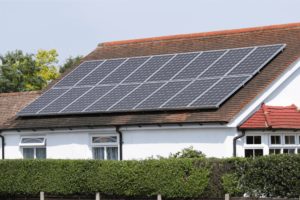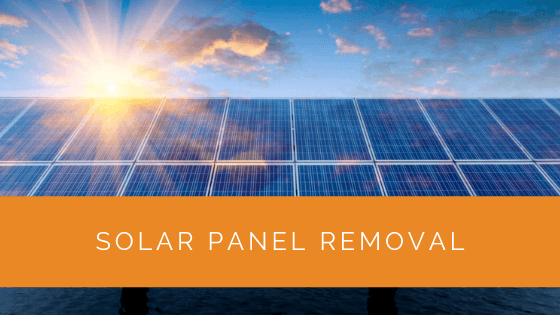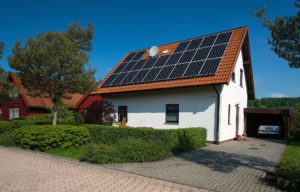Are you considering removing solar panels from your rooftop or commercial installation? Perhaps you’re wondering if it’s a DIY project or if you should hire professionals. In this comprehensive guide, we’ll walk you through the entire process of solar panel removal, from assessing whether you can tackle it yourself to understanding the costs and potential risks involved.
Solar panels are a valuable investment in renewable energy, but circumstances may arise that require their removal. Whether you’re looking to replace your old panels, make necessary repairs, or simply explore your options, understanding the solar panel removal process is crucial. Join us as we delve into the intricacies of this procedure, emphasising the importance of professional expertise and safety to ensure a seamless transition in your renewable energy journey.
Contents
- 1 Key Takeaways
- 2 Can I Remove Solar Panels Myself?
- 3 How Does the Process Work?
- 4 How Long Does Solar Panel Removal Take?
- 5 How Much Does It Cost to Remove Solar Panels?
- 6 Does Removing Solar Panels Damage the Roof?
- 7 Case Study: Professional Solar Panel Removal and Reinstallation for a Residential Property
- 8 Expert Insights From Our Solar Panel Installers About Solar Panel Removal
- 9 Discover the Power of Solar with Solar Panels Network
- 10 The Bottom Line
Key Takeaways
- Professionals should do solar panel removal due to the risks involved in climbing onto the roof and working at heights. DIY removal may lead to personal injury, roof damage, or voiding of warranties.
- The solar panel removal process includes a home site visit, disassembly, removal, assessment, potential repairs, and reinstallation. The timeline for complete removal and reinstallation typically takes around three days.
- The cost of solar panel removal varies but generally starts at around £500 to £650, with additional fees for disconnecting the panel safely and potential roof repairs. Hiring professionals ensures the removal process won’t damage your roof.
Can I Remove Solar Panels Myself?
First things first, you’re probably thinking about whether or not you can remove solar panels yourself. The answer is yes if you’re familiar with how solar panels work in installation and removal and have the necessary equipment, but this isn’t something to be taken lightly.
The average homeowner should hire a professional to remove their solar panels because of the dangers of climbing onto your roof and working at dangerous heights. Also, there is a risk of personal injury and damage to the roof and panels (which could cost you your warranty). You wouldn’t want to be held liable if anything were to happen.
Instead, professionals are trained for these jobs and know how to handle them safely.
How Does the Process Work?
So, when you decide to hire someone, you might have some questions about the process. Here’s an overview of the steps that it entails:
1. Home Site Visit
The first thing a solar panel removal company will do is come to your home and inspect the location of the panels. They’ll want to know how many you have, what type of roof they’re installed on, and where special equipment might need to be placed. This is also when the company will talk about costs and plans for removal based on how much work needs to be done.
They’ll examine the roof before anything else, looking for potential dangers. They’ll also want to inspect how easy it is to access the roof so that they can get in there quickly during the job.
But it’s not just that – they’ll also assess the solar panel’s condition, how old it is, and how much work will be involved in the removal process.
After they’ve assessed all of this, they’ll provide:
- An estimate or quote on what the job will entail.
- Their rate for it.
- A timeframe of when they can do it.

2. Solar Panel Disassembly and Removal
Once the company’s technicians begin work, they’ll disassemble the solar panel from the roof’s surface without damaging it or the roof itself. Then, they’ll move it to their workshop or facility safely. If not, storage on the site is an option.
The removal includes the panels, mounts, wiring, and inverters. Once that’s completed, the second round of assessment will take place. This time, the panel company will take another look at the roof to make sure there aren’t any potential problems if they put new panels up and that the roof is still in good condition.
Also, the existing panel itself is examined to determine its condition and whether it can be resold, reused, or recycled. Some panels are sold to other companies, while others are entirely recycled.
3. Repairs
After that, the company will work with you to determine if any repairs or replacements are needed on the roof before setting up new panels for maximum energy production and efficiency. That’s assuming you still want to go solar. If not, the whole process is over.
Repairs include anything from skylight replacements to insulation work. They could also be for the solar panels if you’re keen on keeping the same ones and not opting for new ones.
But if you decide to buy new solar panels, the company may provide new solar panels with their services, so they’ll also handle all installation procedures.
4. Solar Panel Installation/Reinstallation
If you want to continue with solar power, then it’s time to install the new panels or put the old ones back up!
The technicians will set up all your pre-determined hardware on the roof and reinstall everything removed earlier. This includes wiring, inverters, mounts, and other components. Then, they’ll inspect the entire system to ensure it’s working properly and everything is in its right place.
Finally, the panels will be hooked up to your existing system for electricity generation. Then, you’ll need to set up your account with the company if it’s not already done to set up the monitoring for billing, energy usage, and so on (you know, the drill!).
In contrast, if you’re merely reinstalling existing panels, the only difference is that the technicians will probably install new flashing to ensure the longevity of the roof and panels. The panels will also probably be hooked up to your current system instead of setting up a new one. But other than that, it’s no different.
How Long Does Solar Panel Removal Take?
Typically, solar panel removal takes about three days in total. More specifically, it varies based on whether you’re having the entire process done (removal-repair-installation) or just the removal part.
The removal can take anywhere from a single day to a couple of days, depending on what’s involved and how much work it is. But usually, a single day is enough. The other two days allow for any potential repairs to be completed and give the company time to set up the new panels that will go on after they’re removed.

How Much Does It Cost to Remove Solar Panels?
The cost of solar panel removal can vary quite a bit depending on what you’re having done and where. But the base rate typically starts anywhere from £500 to £650, along with £100 to disconnect the panel safely from your electric system.
Of course, you’ll have to factor in any other fees or potential charges – such as if any roof repairs need to be done first – and the cost will vary from company to company. Some companies include all fees in their base rate, while others may not, so know all charges beforehand.
Does Removing Solar Panels Damage the Roof?
The short answer is no; removing solar panels won’t damage your roof. Yet, the actual work must be done by professionals who know what they’re doing. These professionals use special tools and techniques to make the process as safe and painless as possible for you and your roof.
If you don’t hire someone to remove and replace solar panels and attempt them on your own, there’s a good chance you’ll damage the roof.
Case Study: Professional Solar Panel Removal and Reinstallation for a Residential Property
Background
A homeowner in Kent decided to replace their existing solar panel system, which had been installed over a decade ago. The original system was showing signs of wear, and the homeowner wanted to upgrade to more efficient panels. The project required careful removal of the old panels and preparation for installing a new system, all while ensuring the roof remained in good condition.
Project Overview
The project aimed to safely remove the existing solar panels, assess and repair the roof, and prepare for the installation of new, more efficient panels. The focus was on minimising disruption to the household and ensuring a smooth transition between the old and new systems.
Implementation
- Initial Assessment: Our team conducted a thorough site inspection to evaluate the condition of the panels, mounting hardware, and roof structure. We identified some minor damage around the mounting points that needed addressing.
- Panel Disassembly and Removal: The panels were carefully disconnected from the electrical system and safely removed from the roof. Each panel and its associated components, including wiring and inverters, were catalogued and inspected for reuse or recycling.
- Roof Inspection and Repair: After the panels were removed, a detailed inspection of the roof revealed some wear and minor damage around the mounting holes. These areas were repaired to ensure a watertight seal and prevent future issues. New flashing was installed to reinforce these areas and prepare them for the new installation.
- Reinstallation Preparation: The new solar panels, chosen for their higher efficiency and better energy output, were prepped for installation. The new system also included an upgraded inverter and a monitoring system for better energy management.
- New System Installation: The new panels were installed using a more advanced mounting system that allowed for optimal tilt and positioning. This setup maximised sunlight exposure and energy capture. The system was connected to the home’s electrical grid, and the monitoring system was configured for real-time performance tracking.
- Final Inspection and Commissioning: The final step involved a comprehensive inspection to ensure all components were installed correctly and functioning as expected. The homeowner was provided with a walkthrough of the new system, including the monitoring features and maintenance tips.
Results
- Enhanced Energy Efficiency: The new solar panel system provided a significant boost in energy efficiency, resulting in immediate reductions in electricity bills and a lower carbon footprint for the household.
- Improved Roof Condition: The roof repairs and new flashing extended the roof’s lifespan, ensuring it could support the solar panels for many years without issues.
- Smooth Transition: The professional handling of the removal and installation process ensured minimal disruption to the household. The project was completed on time and within budget.
- Future-Ready Setup: The new system was designed to accommodate future upgrades, such as battery storage, providing the homeowner with the flexibility to expand their solar capacity as needed.
Summary
This case study highlights the importance of professional expertise in solar panel removal and reinstallation. By entrusting the process to skilled professionals, the homeowner not only ensured the safe and efficient handling of their existing panels but also prepared their property for a more advanced solar solution. At Solar Panels Network, we are committed to delivering comprehensive and tailored services that meet our clients’ unique energy needs, ensuring they reap the full benefits of solar technology.
Expert Insights From Our Solar Panel Installers About Solar Panel Removal
Removing solar panels is a task best left to professionals due to the complexity and risks involved. From safely disconnecting electrical connections to ensuring the roof’s integrity, each step requires precision and expertise. Attempting a DIY removal can lead to costly mistakes, including potential damage to the panels or the roof itself.
Senior Solar Installer
The removal process is not just about taking down the panels; it’s also an opportunity to inspect and repair the roof. Over time, mounts and fastenings can wear out or become corroded, so it’s crucial to address these issues to prevent leaks or structural damage. This step is essential for maintaining the long-term health of your roof and the efficiency of any new solar installation.
Renewable Energy Consultant
Inverters and wiring are critical components that need careful handling during removal. These systems are often delicate and costly, so proper disassembly and storage are vital to avoid unnecessary expenses. Furthermore, if you’re planning to reinstall the panels or replace them with a new system, ensuring that all components are in good condition is crucial for optimal performance.
Lead Solar Technician
Discover the Power of Solar with Solar Panels Network
Are you navigating the world of solar installations? Look no further than Solar Panels Network, the UK’s trusted partner in harnessing the sun’s potential. Our dedication goes beyond just installations; we’re on a mission to transform how homeowners and businesses across the UK perceive and utilise energy. By choosing us, you’re reducing your carbon footprint and making a smart financial move that promises savings for years ahead. Contact us today and embark on your solar journey.
The Bottom Line
Solar panel removal isn’t difficult but requires expertise and special equipment. That said, you might want to hire a solar panel removal company instead of attempting to do it yourself. That way, you can rest assured that you’re doing the job right.
After all, a solar installation is a long-term investment. You don’t want to cut corners or make mistakes that could decrease your energy output, increase your monthly power bills, or even damage the equipment!
So, if you want to remove solar panels from your rooftop or commercial installation, look into a professional company to enjoy cost savings without worrying about costly mistakes!
About the Author
Solar Panels Network stands at the forefront of solar energy solutions, driven by a team of seasoned solar engineers and energy consultants. With over decades of experience in delivering high-quality solar installations and maintenance, we are committed to promoting sustainable energy through customer-centric, tailored solutions. Our articles reflect this commitment, crafted collaboratively by experts to provide accurate, up-to-date insights into solar technology, ensuring our readers are well-informed and empowered in their solar energy decisions.


